per wiki, the conversion from barycentric coordinates to Cartesian coordinates is as follow
here is a piece of code come from somewhere else
import numpy as np
import matplotlib.pyplot as plt
# from barycentric coordinates to Cartesian coordinates
a = np.array([0. , 0. , 1. , 0.25, 0.25, 0.5 ])
b = np.array([0. , 1. , 0. , 0.25, 0.5 , 0.25])
c = np.array([1. , 0. , 0. , 0.5 , 0.25, 0.25])
x = 0.5 * ( 2.*b+c ) / ( a+b+c )
y = 0.5*np.sqrt(3) * c / (a+b+c)
plt.scatter(x,y)
plt.show()
it seems that the piece of code is using another formula, if it is, what is the formula?
assume the barycentric coordinates of B is (0,0,1), how to compute its Cartesian coordinates? what lambda_1, lambda_2, lambda_3, x_1, x_2, x_3, y_1, y_2, y_3 are for point B?

